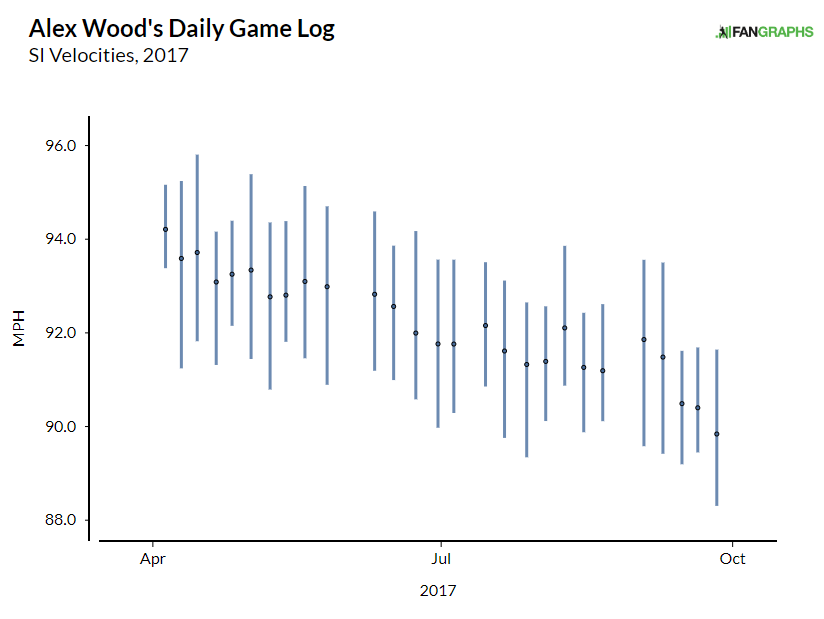The Best (Expected) Fastballs of 2019
If you’re into FanGraphs’ linear pitch values, there was a many-way tie for the single most valuable pitch of the year. As the pitch values are context-neutral and count-adjusted, the best pitch you can throw is a 3-0 pitch that retires a batter. 3-0 is the worst count you can be in as a pitcher, and an out is the best possible outcome. Here’s one:
Wait a second. That doesn’t look like a very good pitch at all! Yasiel Puig got robbed there; that’s a 400-foot laser beam, at pretty much the optimum home run angle. He just happened to catch the deepest part of the park, and Starling Marte is fast.
Yes, linear weights aren’t perfect. We all know that. Many of their problems are nearly impossible to fix; if a pitcher’s fastball helps set up his slider, should it get credit for some of the slider’s effectiveness? If he’s staying away from Juan Soto with first base open and a man on third, should we dock those pitches for being outside the strike zone? Pitch values have their fair share of problems.
But if we can’t fix all of those problems, we can at least tackle one. When a ball is nailed like Puig did with that one, it’s usually a hit. Since 2015, we’ve had access to xwOBA, which (roughly speaking) considers the speed and angle of a given hit to assign it a value. Rather than look at the result on the field, it looks at the results of all similar batted balls. It has its shortcomings (largely related to spray angle), but it sure beats calling that Jordan Lyles pitch a good one. Read the rest of this entry »

